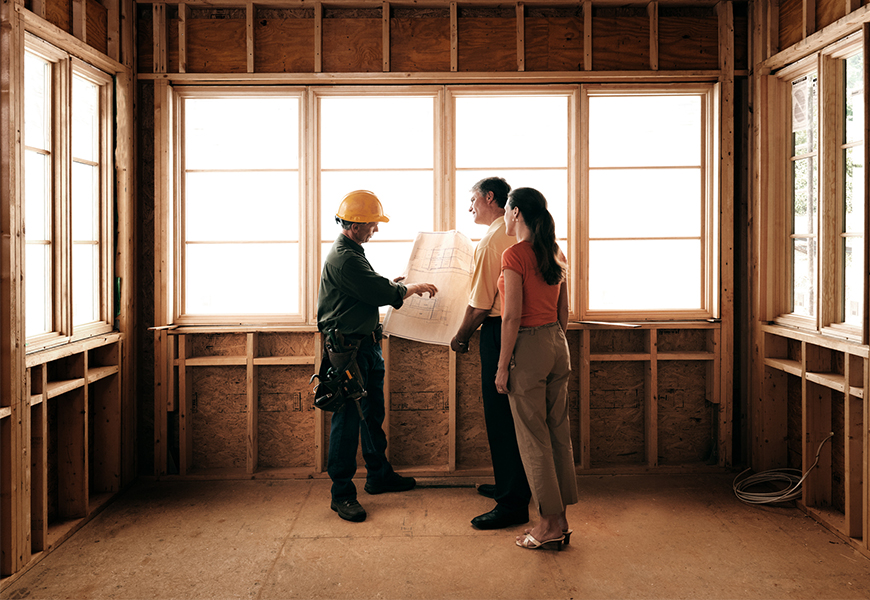Connecting new developments: 17 FAQs answered
Are you a developer wondering how to get your new development connected to the nbn™ network?
Maybe you’re living in one and want to know how to get online?
Or perhaps you’re in the planning stages of a new development (for you, or someone else), and you want to find out if your development can get connected to the nbn™ network and what you'll need to do?
Whatever your role and relationship to a new development, we’ve compiled the most commonly asked questions – and their answers – to help demystify the nbn™ New Development application process.
Read on to find out how you can get your new development connected to the nbn™ network as quickly as possible.

When to lodge
1. When should an nbn™ New Development application be lodged?
To meet requirements during the construction phase and obtain the approvals needed, it’s important to start planning as early as possible.
If you are building a small development in an area eligible for nbn, such as sub-dividing a lot into two residential units, please allow a minimum of three months’ notice before the premises will be occupied to help ensure the network can be connected in time. For all other developments, we recommend giving yourself at least six months before the first occupants move in to submit and complete your application.
We suggest lodging an nbn™ New Developments application after you’ve chosen your relevant building partners, including architect, builder, contractor or nbn™ trained New Developments supplier.
Before you start, take time to prepare your application. This will help us accurately assess your development plans and determine whether your development can be connected to the nbn™ network.
Submitting an application… and who does it
2. Okay, so what’s the process for submitting an nbn™ New Development application, and who’s responsible for lodging it?
An nbn™ New Development application involves two main steps: the first is completing an online eligibility check. And the second, if you’re eligible, is to complete and submit an online application.
The developer (which in the case of smaller developments, may be the builder) is usually the one responsible for lodging the application but can also nominate an authorised representative.
How long it takes
3. After I’ve submitted an nbn™ New Development application, how long does it take to get connected, if the development is eligible?
The length of time varies, depending on factors including your application’s complexity. We recommend those who’ve submitted an nbn™ New Development application register for the nbn™ New Developments Portal – details on how to sign up can be found in your agreement confirmation email, including a unique registration code.
From the portal, you’ll be able to track the progress of your nbn™ New Development application and monitor the estimated ‘ready for service’ date.

How much it costs
4. What are the nbn™ New Development application costs?
A developer contribution charge is applied based on each new premises that requires a new connection to the nbn™ network.
For a single dwelling development (like a house) the cost is capped at $600 (incl. GST) per premises, while for multiple dwelling developments (like apartments), it’s capped at $400 (incl. GST) per premises.
This fee is charged because the Australian Government policy requires nbn to partially recover the cost of deploying the nbn™ network to new developments.
Checking in
5. How can I check on my nbn™ New Development application?
It’s been rejected!
6. Why has my nbn™ New Development application been rejected?
This could be for a number of reasons. For example, you may have submitted an nbn™ New Development application for a property that does not require one; like if you are knocking down a house with an existing nbn™ connection and rebuilding a new one in its place.
For information on why your application was rejected, log in to the nbn™ New Developments Portal.
Service plan
7. I need to provide a service plan to nbn – what’s a service plan?
A service plan, or master development plan, needs to be submitted to nbn, either as part of your nbn™ New Development application, or as part of the documentation provided as part of the process down the track. These plans outline how you intend on installing nbn™ infrastructure, such as through lead-in conduits, pit and pipe, or pathways.
You can upload all supporting documents as part of your online application or via the nbn™ New Developments Portal.
Fixed Wireless and Sky Muster™
8. Is an nbn™ New Development application required for Fixed Wireless and Sky Muster™ areas?
Browser issues
9. Why isn’t the application form working in my browser?
The nbn™ New Development application form is compatible with most browsers, including Chrome, Edge, Firefox, Safari 5 (or above), Opera 12 (or above) and Internet Explorer 11 on computers.
For mobile, the application is compatible with Safari for iOS 7 (and above); Android browsers 2.2 (and above), 3.1 (and above) and 4 (and above); Chrome for mobile; Firefox for mobile; and Internet Explorer 10 (and above) for Windows 8 devices.
Granny flats and outbuildings
I’m a developer
11. I’m a developer and want to know what type of infrastructure I need to construct for my development type?
For developments of one to eight premises facing an existing road, a lead-in conduit is needed that connects from the front boundary of the property directly to the nbn™ network. Private roads change this, as do developments with fire alarms, security systems and elevator phone lines.
Alternatively, pit and pipe requirements mean a conduit needs to be installed underground that leads to shared local network pits. This type of installation is typically used in developments that include multiple premises and new roads (private or public).
Developments of high-rise apartments or offices might require conduit and cable tray pathways to be installed into the physical walls of the building/s. This is an important consideration for developments with multiple commercial premises, particularly those that include additional services reliant on an nbn™ connection, such as fire alarms, security systems and phone lines.

I’m a builder
12. I’m a builder installing a lead-in conduit. What size should it be?
A nominal P20 White Telecommunications Conduit should be used (with a 23mm internal diameter). This should connect to the property boundary from the point of the proposed external nbn™ utility box (located at the premises).
Please note that no more than two pre-formed bends (300mm radius) should be used between the premises and property boundary. To make it easy, we have a full checklist for ensuring lead-in conduit compliance.
Updates for my address
13. How do I check the application status for my address if I’m not a listed contact?
Phone and internet provider charge
14. My builder has already paid for an nbn™ network connection (the developer contribution charge) during their application, so why is my phone and internet provider charging me a $300 development fee?
As part of Australian Government policy, nbn is required to charge a one-time fee of $300 to phone and internet providers once they place an order for an nbn™ network service to a new development.
Phone and internet providers may choose to pass this charge on to their customers, which is likely why you’re being charged this fee. To discuss or dispute this charge, we advise speaking with your provider.

I’m a tenant
15. I’m just a tenant in a new build where no application was submitted. Am I responsible for lodging the application?
If an nbn™ New Development application is not submitted for a new property, you won’t be able to connect to services over the nbn™ network via a phone and internet provider.
If you are unsure, please check with the owner/property manager to determine the status of your connection.
I’ve just moved in to my newly-built house
16. I’ve moved into a new house and my builder has wired my home for the nbn™ network – but my phone and internet provider advises I have to submit an nbn™ New Development application. Why?
Equipment installed in garage
17. Why has the equipment been installed in my garage? I’d like you to move it…
Your builder may have installed a telecommunications hub in your garage, which is connected via smart wiring to ethernet ports throughout your home.
The internal nbn™ equipment (known as a Network Termination Device or ‘NTD’) will be situated within this hub, connected to one of these ports. This means you can simply plug your router into the corresponding port for connectivity.
If you like, you can also leave your router in the garage, directly connected to the NTD. From there, you'll be able to connect the ethernet ports on your router to the ports in the hub.
If you would like it moved, you’ll need to submit a Relocation Works application and pay for the relocation (costs vary).
Still got questions?
We’re here to help.
Start here for information on connecting your home.
And, developers, this section is all for you.
There are also lots of helpful hints here.
Last updated on 07 July 2021


